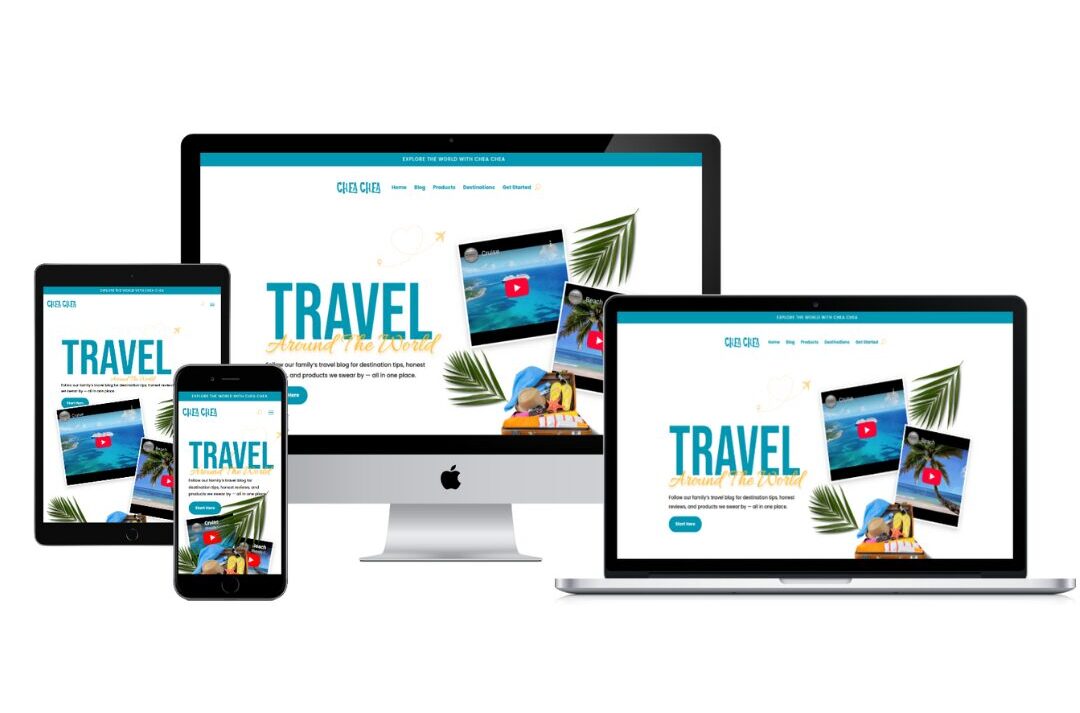Family Travel Website Design with an Affiliate Blog
 Family travel blogs are some of the most engaging corners of the internet. They offer a mix of inspiration, real-life tips, and relatable stories that help other families plan their own adventures. If you’re building a travel website that doubles as an affiliate blog—especially one that follows a dad and his two kids—you’ll want the design to capture both heart and functionality.
Family travel blogs are some of the most engaging corners of the internet. They offer a mix of inspiration, real-life tips, and relatable stories that help other families plan their own adventures. If you’re building a travel website that doubles as an affiliate blog—especially one that follows a dad and his two kids—you’ll want the design to capture both heart and functionality.
1. Personal Storytelling as the Foundation
A family-run travel blog shines when it feels authentic:
Everyday adventures – Whether it’s a road trip, a cruise, or a weekend getaway, readers love seeing what worked well for your family.
Kid-friendly perspectives – Share what the children enjoyed most, from activities to meals. It makes the content relatable to parents planning trips with kids.
Visual storytelling – Use photos, short videos, or even travel vlogs to make your posts immersive.
This approach turns travel tips into lived experiences—building trust with your audience.
2. Affiliate Blog Integration
The affiliate component should blend seamlessly with storytelling:
Travel booking links – Partner with travel platforms that allow readers to book accommodations, tours, or transportation.
Family-friendly gear reviews – Highlight backpacks, luggage, travel tech, or even kid-focused essentials that your family actually uses.
Extras beyond the trip – Travel insurance, excursions, or even dining recommendations can be monetized naturally.
By weaving affiliate links into genuine recommendations, your site avoids feeling like an ad and instead feels like a guide.
3. Smart Website Design Choices
Good design keeps visitors engaged and encourages repeat visits:
A welcoming homepage – Feature family photos and highlight recent blog posts.
Organized categories – Break posts into sections like Family Travel Tips, Destination Reviews, Packing Guides, and On-the-Go Activities.
Clean navigation – Families are busy; make sure they can quickly find what they need.
Mobile-first design – Most travel research happens on phones, so speed and responsiveness are critical.
4. Building Trust Through Authenticity
The personal angle sets this type of blog apart from big-name travel sites:
Include a “Meet Our Family” page introducing dad and the kids.
Share behind-the-scenes stories or even travel mishaps—readers value honesty.
Use clear affiliate disclosures so readers know when links help support the blog.
5. SEO & Growth Strategy
To reach more families looking for guidance:
Use keywords parents actually search for, such as family travel ideas, best vacations with kids, and packing tips for families.
Create blog posts that answer common questions:
How do you travel affordably with kids?
What destinations are easiest for families?
What should I pack when traveling with children?
Share posts across social media to drive traffic back to your site, ensuring your domain gets the credit (and SEO boost).
Final Thoughts
A family travel website with an affiliate blog blends storytelling, design, and smart monetization. By sharing adventures from the perspective of a dad and his kids, you can inspire other families while building a resource that’s both trustworthy and profitable.
The best travel blogs don’t just tell people where to go—they bring readers along for the journey.
Discover more from Rhonda Cosgriff Web Designs
Subscribe to get the latest posts sent to your email.








